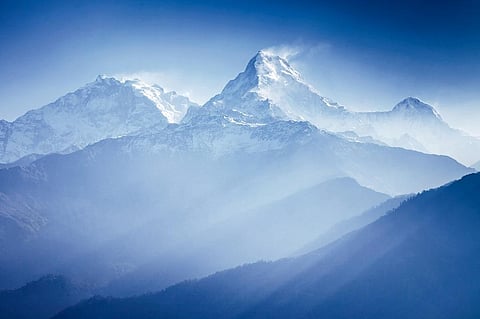

The height of a mountain has long been assumed to increase when pressure from under the surface of Earth pushes land mass upwards. However, this does not work for the steepest mountains of the Earth, according to a new study.
The study found that the height of the mountains stops increasing after crossing a threshold, influenced by erosion of the areas between mountains (known as channels).
“Areas of land above channels are likely being controlled by how quickly a river can cut down — this is the framework by which we understand how the height of mountains varies as a function of climate and the collision of continents,” said George Hilley, professor of geological sciences at Stanford University and lead author.
But, “the anomaly we observed is kind of a mystery and is not necessarily what conventional theory might predict,” he added.
It is because when mountains reach a certain height, erosion “between the mountains suddenly becomes extremely sensitive to subtle changes in their incline”, the researchers explained, in the study published in the journal Nature Geoscience.
This restricts the height of the mountains, they added.
“People have argued for a long time that as channels get steeper and steeper, the erosion rate keeps increasing,” Hilley said.
“We find that the theory works really well until a certain point and then it breaks down empirically — it seems as though something else kicks in that we don't completely understand,” Hilley added.
For the study, the team analysed samples from a broad range of mountain landscapes across the tropics, including Venezuela, Brazil, Guatemala, Costa Rica and Taiwan.
The findings were consistent across all regions of the globe and may also be applied to understand ancient topography, the researchers said.
“The Himalayas are being uplifted pretty rapidly and they expose pretty hard rocks, and indeed, when you measure them out, they are pretty close to this threshold,” Hilley noted.
“You might be able to take this threshold with just the modern configuration of the landscape and actually place some upper bound on what the topography of the ancient Himalayas looked like,” he added.